When the winter days are wet, and we are all bundled up, the birds around Victoria have different plans. Cold winter days are perfect days to be a duck! Around the harbours in Victoria there are different species of birds that you can’t always see on a hot summers day. The winter swells are bringing in lots of nutrients and there is plenty to see and many different quacks and squawks to be heard!
These photos were taken by our Chief Mate Yves around the harbours in Victoria. So grab your rain boots, umbrella and a friend, and go take a stroll.
Here are some birds you can try to spot:
Hooded Merganser
One of the first things you’ll notice about the Hooded Merganser, is that its head looks abnormally large for its small body and thin bill. This is because the Hooded Merganser has a fan shaped, collapsible crest. During the winter these birds go to protected saltwater bays, like the Victoria Harbour! In the summer they nest in tree holes near rivers or ponds. Right now, you can see them surface diving for small fish and insects. They have an extra eye-lid that can improve their underwater vision, acting like a pair of goggles.
Listen to them here

Buffleheads
Buffleheads are small ducks with large, wide heads and short wide bills. From further away, the males look black and white, but close up you’d notice a glossy green and purple tinge in their black feathers. Females are grey/brown in colour and have a white patch on their cheeks. They will dive to catch aquatic invertebrates, crustaceans and mollusks, which they will swallow while they are still underwater. A Buffleheads dive lasts 25 seconds. They will run a short distance on the water to take off and generally will fly low over the water.
Listen to them here

Harlequin Duck
Harlequin Ducks are a bird that spends its winters along rocky coastlines, in the wild surf. The turbulent coastal waters of Victoria’s shoreline is the perfect winter getaway for these ducks. They are medium in size with white marking in front of their eyes and ears. Males are a darker blue, with reddish brown sides and white patches. The females are a brownish color with white spots on her head. They surface dive and feed on small fish, insects and marine invertebrates.
Listen to them here
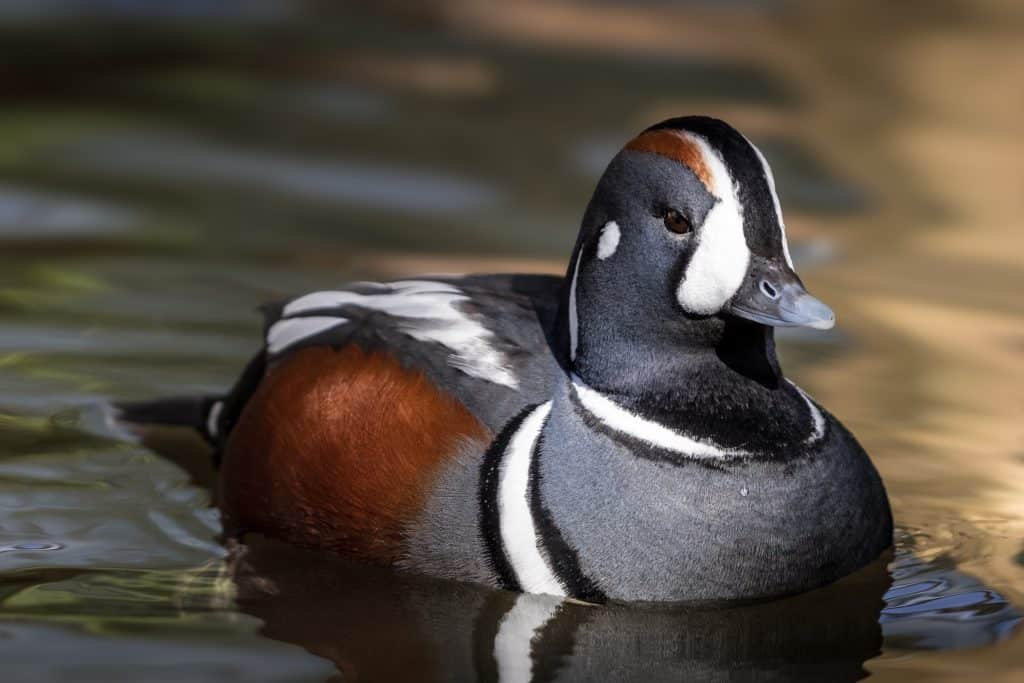
Mallard Duck
Whenever I think of a duck, the Mallard Duck is usually the first to come to mind. Their dark green head, and yellow flat bill makes them stand out. You can find them floating in the ponds of Beacon Hill Park with other dabbling ducks or along Victoria Harbours coastline. Unlike the Hooded Merganser and the Harlequin Duck, the Mallard Duck doesn’t dive. They are foragers and will dabble in the water to feed on seeds and aquatic vegetation. They will forge on shore, eating aquatic insect larvae and vegetation. If you are hearing a quaking sound coming from the Mallard then you would be hearing a female, the males make a quieter, raspy sound.
Listen to them here
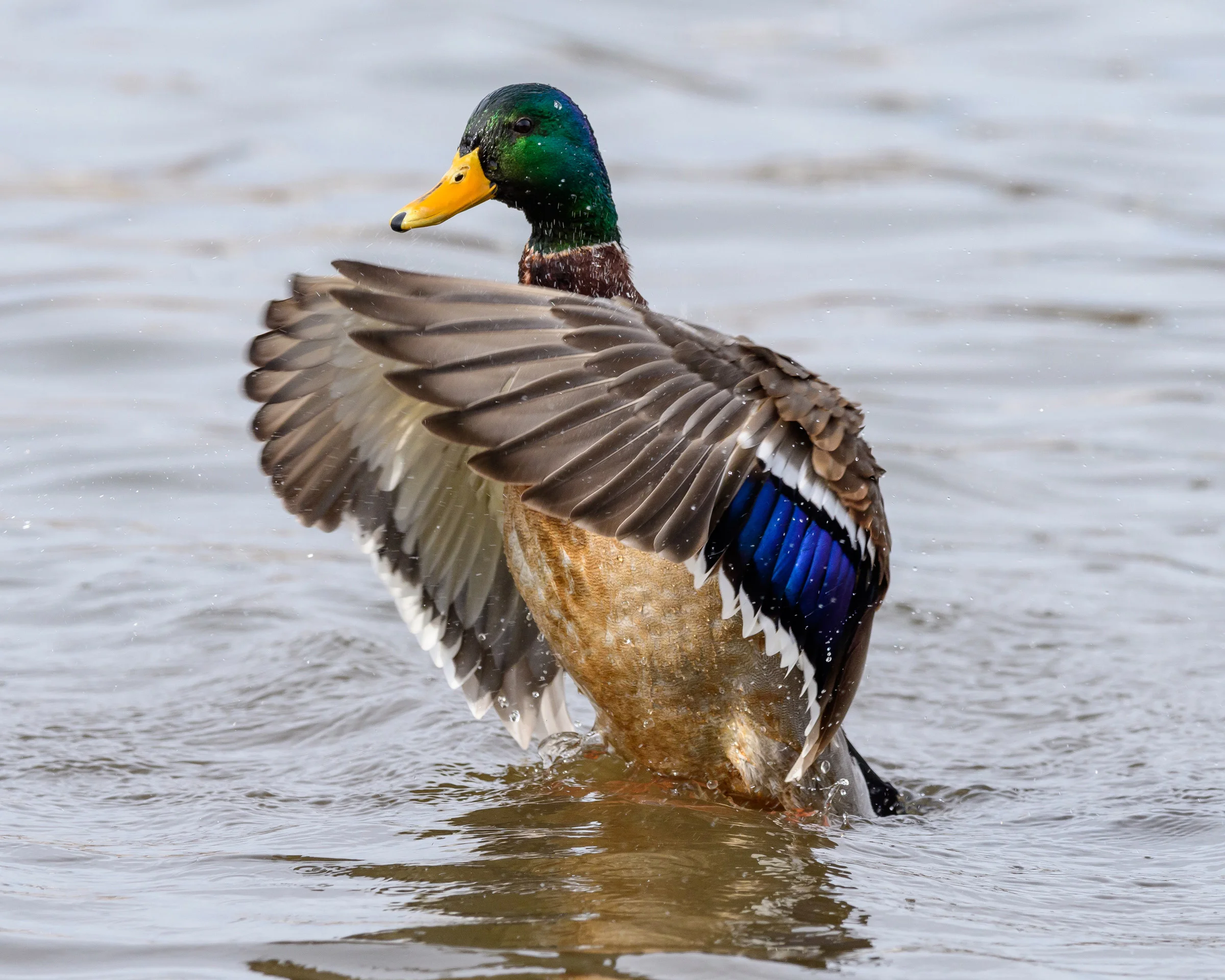
American Wigeon
The American Wigeon is another dabbling duck and could be spotted along with the Mallard Duck at Beacon Hill Park or around Victoria Harbour. They’ll feed on aquatic plants just bellow the surface of the water as well as insects. American Wigeons have small bills and the males have a distinctive white forehead, green face patches, and white patches in the wings. The females are reddish brown with a grey head.
Listen to them here
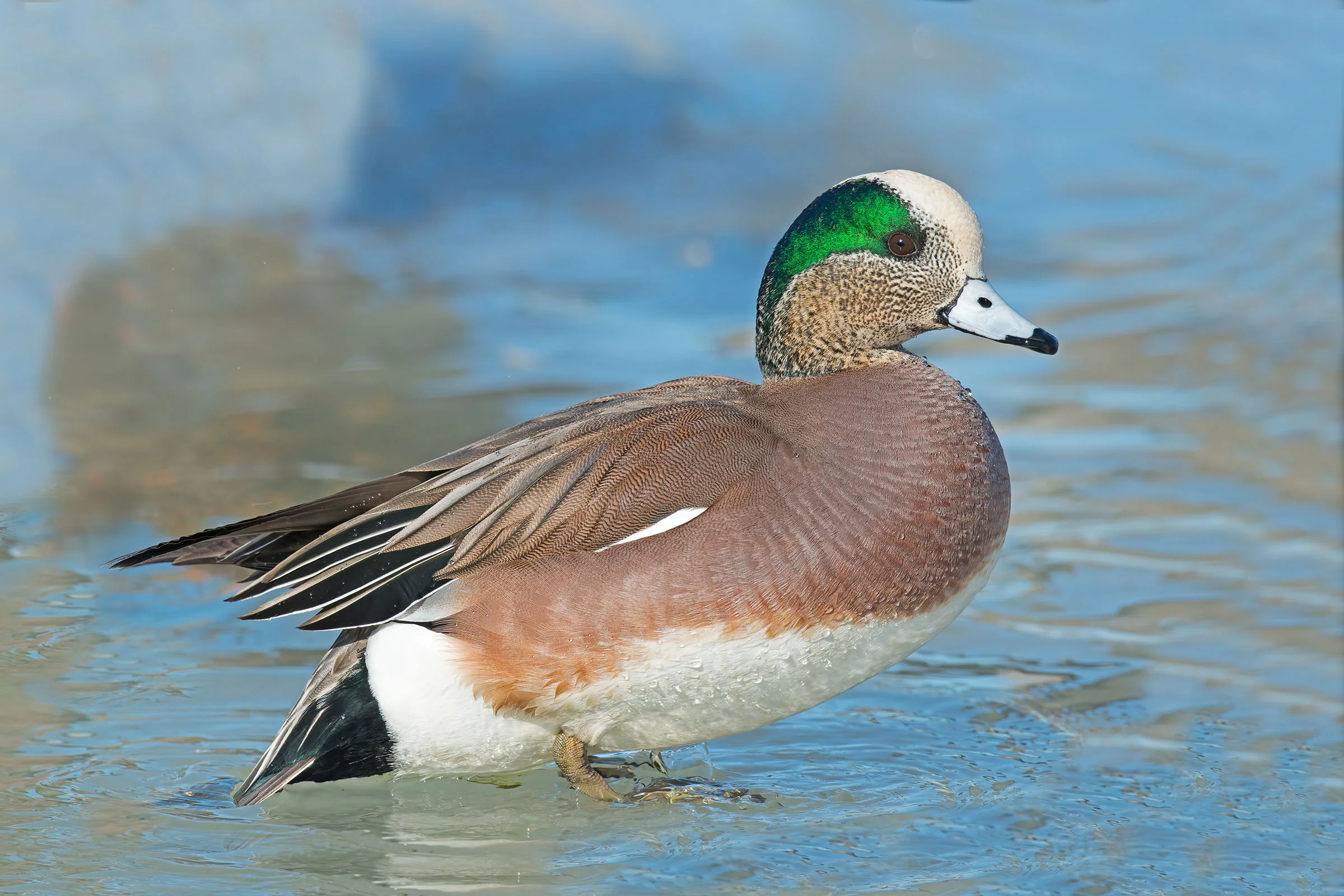
Northern Pintail
What you’ll notice at first about the Northern Pintail is long sharp tail, which is more prominent in the males. They are a medium sized duck with a long thin neck. The males have a dark brown head and a white neck. The females are a tan spotted brown colour. They will pick up grains, seeds and weeds from the ground and will dabble for aquatic insects, crustaceans and snails.
Listen to them here
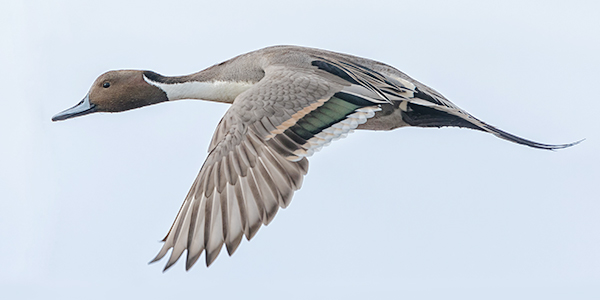
Black Oystercatchers
You can spot these birds on rocky shores, looking for a mollusk feast, especially mussels and limpets. These bird’s feathers are entirely black and have a vivid, long orange beak. They don’t stray far from shore and you can spot them feeding on the shoreline all year round in Victoria.
Listen to them here
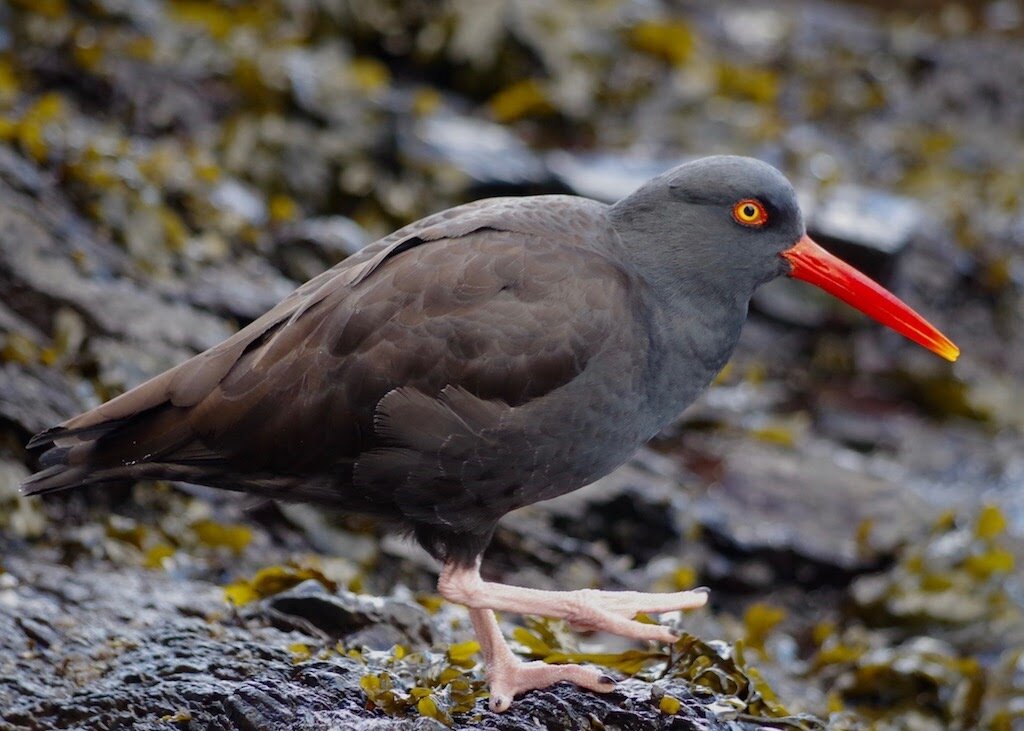
Sandpipers
You will see these small birds in a hunched posture walking around looking for little crustaceans, insects and other invertebrates to probe. They are the smallest bird along the coastline. They can be seen on beaches and rock areas near the waters edge, sometimes feeding near other birds like the Black Oystercatcher.
Listen to them here
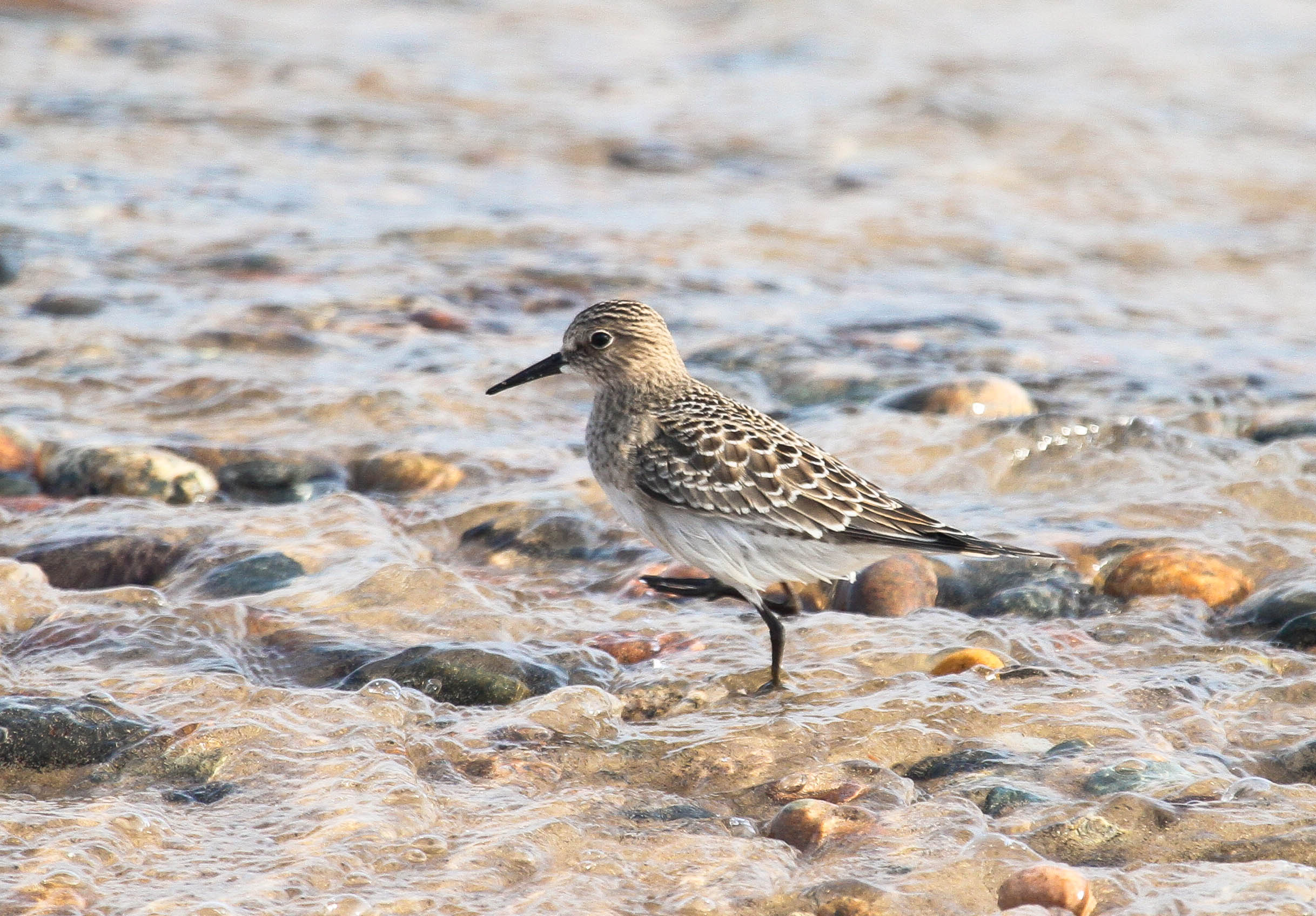
Bald Eagle
You can spot Bald Eagles soaring high, or perched on a rock or in a tree. Despite their name, they aren’t actually bald. They have white feathers which cover their head and contrast from their chocolaty brown body and wings. Juvenile Bald Eagles are entirely brown and don’t develop their white feathers until they are around 4 years of age. Bald Eagles will mate for life and continually build on their nest, which you can usually spot from the ground because they can be 6 feet in diameter. Eagles eat fish like salmon and herring, they also can eat smaller birds, invertebrates and mammals like rabbits.
Listen to them here
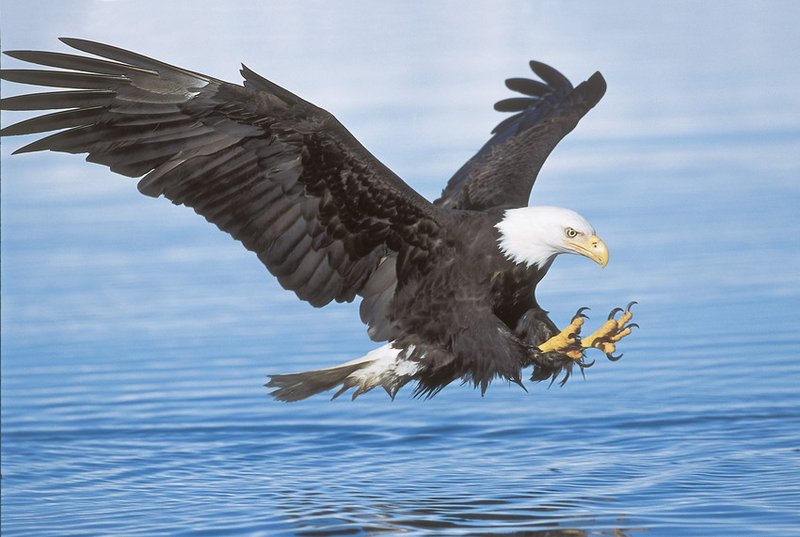
Have fun out there!!
